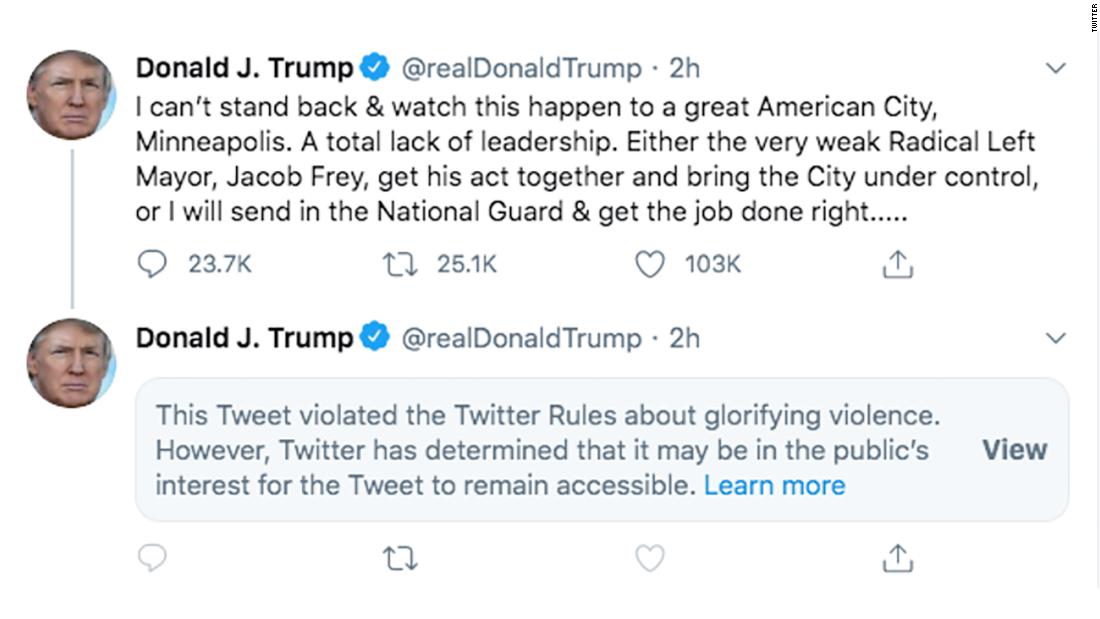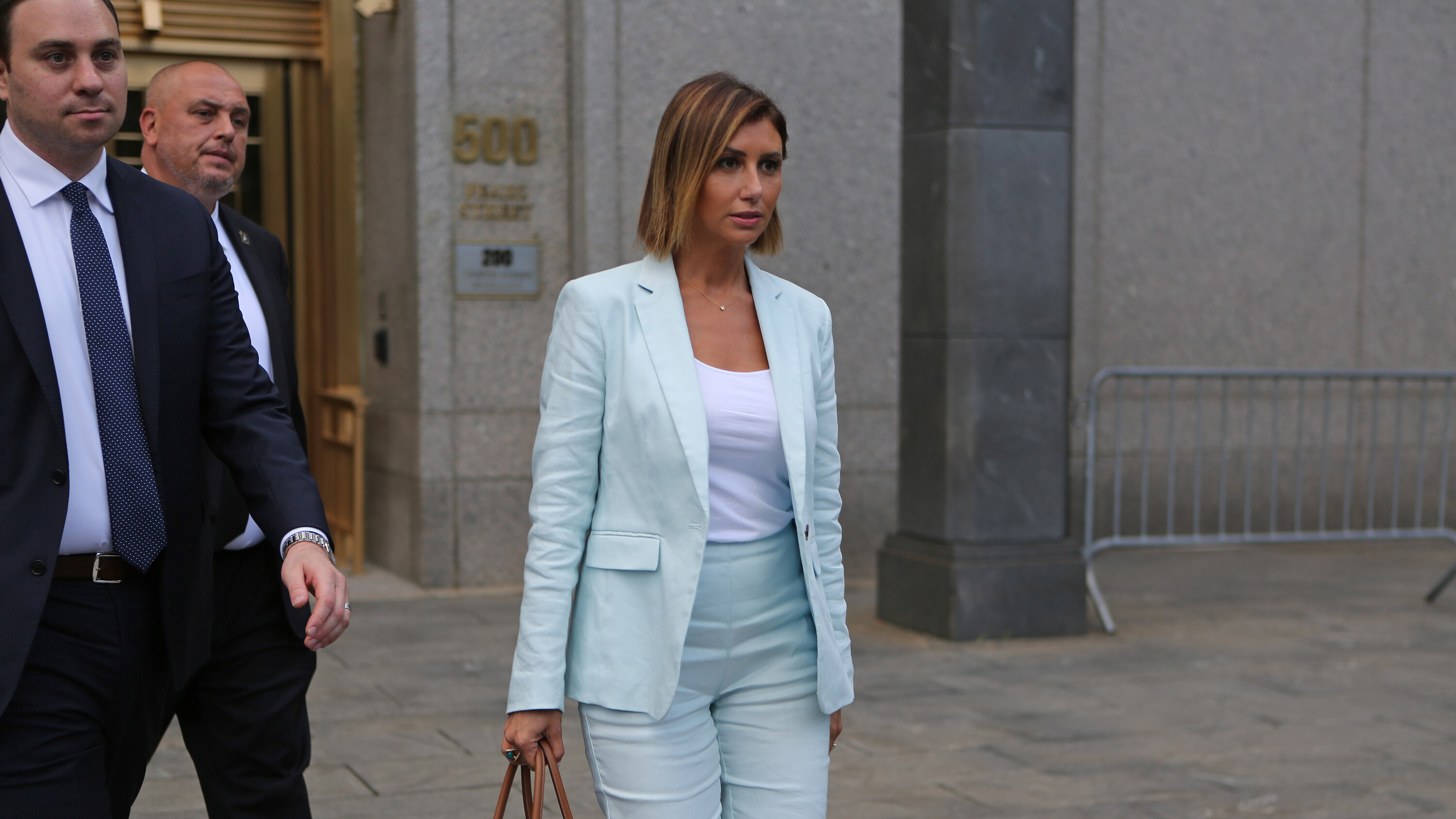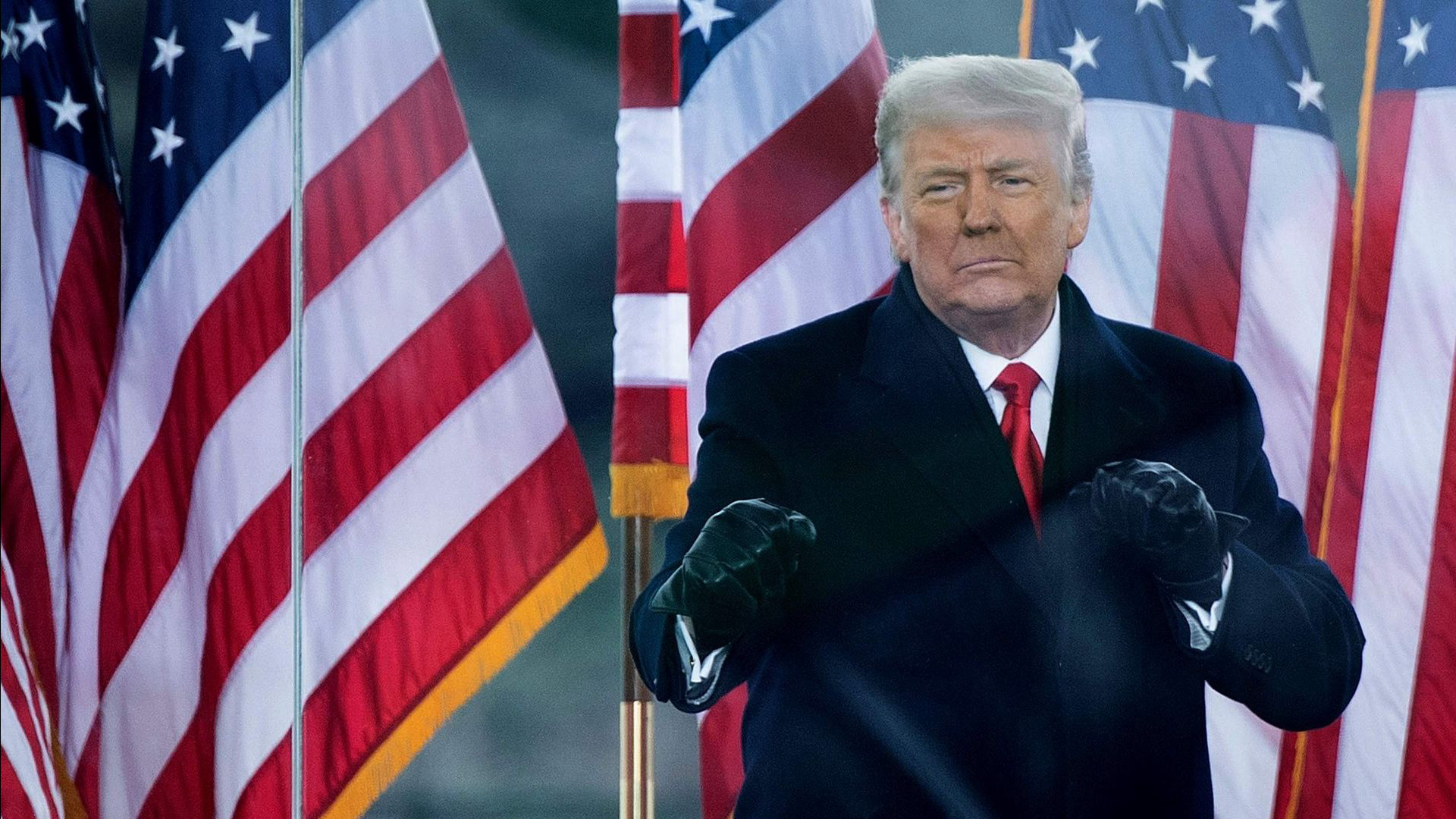What is the significance of "trump's tweet"?
"Trump's tweet" refers to a message posted by former US President Donald Trump on the social media platform Twitter. These tweets often garnered significant attention and sparked discussions and controversies.
Importance and Benefits:
Unfiltered Communication: Trump's tweets allowed him to communicate directly with the public, bypassing traditional media outlets. This gave him more control over his message and enabled him to connect with his supporters.
Agenda Setting: Trump's tweets often set the news agenda, influencing media coverage and public discourse. They could shape public opinion, drive news cycles, and even impact policy decisions.
Political Polarization: Trump's tweets often fueled political polarization, with supporters and opponents reacting strongly to his statements. This contributed to the increasingly divided political landscape in the United States.
Historical Context:
Trump's use of Twitter as a primary communication channel was unprecedented for a US President. It marked a significant shift in the way presidents interacted with the public and the media.
Trumps Tweet
Introduction: Trump's tweets were a defining aspect of his presidency, shaping public discourse and political dynamics.
Key Aspects:
- Direct Communication: Trump's tweets allowed him to bypass traditional media and connect directly with his supporters.
- Agenda Setting: His tweets often set the news agenda, influencing media coverage and public conversations.
- Political Polarization: Trump's tweets contributed to the increasing political polarization in the United States.
{point}: Direct Communication
Introduction: Trump's tweets enabled him to communicate directly with the public, fostering a sense of connection with his supporters.
Facets:
- Unfiltered Messages: Trump's tweets allowed him to share his thoughts and opinions without the filter of traditional media.
- Building a Base: His tweets helped him connect with and mobilize his supporters, creating a loyal base.
- Bypassing the Media: Trump's use of Twitter allowed him to bypass the traditional media and control his message.
Summary: Trump's direct communication via tweets allowed him to connect with his supporters, shape public opinion, and bypass the traditional media.
{point}: Agenda Setting
Introduction: Trump's tweets often set the news agenda, influencing media coverage and public discourse.
Facets:
- Media Influence: Trump's tweets frequently dominated news cycles, driving media coverage and shaping public conversations.
- Public Discourse: His tweets sparked discussions and debates on various topics, influencing public opinion and policy discussions.
- Political Leverage: Trump used his tweets to pressure opponents, promote policies, and influence political outcomes.
Summary: Trump's tweets had a significant impact on the news agenda, shaping public discourse and influencing policy discussions.
{point}: Political Polarization
Introduction: Trump's tweets often fueled political polarization, contributing to the increasingly divided political landscape in the United States.
Facets:
- Partisan Divide: Trump's tweets often reinforced partisan divisions, appealing to his supporters while alienating opponents.
- Echo Chambers: His tweets created echo chambers, where like-minded individuals reinforced their own beliefs and dismissed opposing views.
- Amplifying Extremism: Trump's tweets sometimes amplified extreme views and conspiracy theories, further polarizing the political climate.
Summary: Trump's tweets contributed to the increasing political polarization in the United States, reinforcing partisan divides, creating echo chambers, and amplifying extreme views.
Conclusion: Trump's tweets were a defining aspect of his presidency, shaping public discourse, political dynamics, and even the broader social and cultural landscape.
Trumps Tweet
Former US President Donald Trump's tweets were a defining aspect of his presidency, shaping public discourse and political dynamics like never before. Here are six key aspects that highlight the significance of "Trump's tweet":
- Direct Communication: Trump's tweets allowed him to bypass traditional media and connect directly with his supporters.
- Agenda Setting: His tweets often set the news agenda, influencing media coverage and public conversations.
- Political Polarization: Trump's tweets contributed to the increasing political polarization in the United States.
- Unfiltered Communication: Trump's tweets were often unfiltered and impulsive, providing a glimpse into his thoughts and opinions.
- Media Manipulation: Trump sometimes used his tweets to manipulate the media, setting traps or changing narratives to his advantage.
- Historical Record: Trump's tweets serve as a historical record of his presidency, providing insights into his decision-making and interactions.
These aspects underscore the multifaceted impact of "Trump's tweet." His direct communication and agenda-setting ability allowed him to shape public opinion and influence policy discussions. However, his tweets also contributed to political polarization and raised concerns about the erosion of democratic norms. Ultimately, Trump's use of Twitter as a primary communication channel was unprecedented and will continue to be studied and debated by historians and political scientists.
Direct Communication
Trump's use of Twitter as a direct communication channel with his supporters was a defining characteristic of his presidency. By bypassing traditional media outlets, he was able to control his message, shape public opinion, and mobilize his base.
- Unfiltered Communication: Trump's tweets provided an unfiltered window into his thoughts and opinions. Unlike traditional media interviews or press conferences, his tweets were often impulsive and unedited, giving his supporters a sense of authenticity and connection.
- Building a Loyal Base: Trump's direct communication via Twitter helped him build a loyal base of supporters who felt personally connected to him. His tweets fostered a sense of community and shared purpose, which translated into strong support at rallies and on election day.
- Agenda Setting: Trump's tweets often set the news agenda, influencing media coverage and public conversations. By tweeting about specific issues or individuals, he could draw attention to topics that aligned with his agenda and shape the narrative in his favor.
- Bypassing the Media: Trump's use of Twitter allowed him to bypass the traditional media and communicate directly with the public. This gave him greater control over his message and reduced the ability of the media to filter or interpret his statements.
In conclusion, Trump's direct communication via Twitter was a powerful tool that allowed him to connect with his supporters, shape public opinion, and control the news agenda. This direct line of communication had a significant impact on his presidency and continues to be a topic of study and debate.
Agenda Setting
Trump's tweets had a significant impact on the news agenda, shaping public discourse and influencing media coverage. By tweeting about specific issues or individuals, he could draw attention to topics that aligned with his agenda and shape the narrative in his favor.
- Attention-Grabbing Headlines: Trump's tweets were often designed to generate headlines and capture media attention. By making bold statements or attacking his opponents, he could ensure that his messages would be widely reported.
- Agenda Control: Trump used his tweets to control the news agenda, setting the topics that would be discussed in the media and by the public. By tweeting about certain issues repeatedly, he could keep them in the spotlight and influence public opinion.
- Media Manipulation: Trump sometimes used his tweets to manipulate the media, setting traps or changing narratives to his advantage. By tweeting misleading or inaccurate information, he could sow confusion and undermine trust in the media.
- Public Discourse: Trump's tweets sparked discussions and debates on various topics, influencing public opinion and policy discussions. By weighing in on current events or controversial issues, he could shape public perceptions and influence the direction of policy debates.
In conclusion, Trump's tweets had a significant impact on the news agenda, allowing him to control the narrative, influence public opinion, and shape media coverage. This aspect of "Trump's tweet" highlights the power of social media in shaping public discourse and influencing political dynamics.
Political Polarization
Trump's tweets played a significant role in exacerbating political polarization in the United States. His divisive rhetoric and attacks on opponents reinforced partisan divides and created an atmosphere of hostility and mistrust. This contributed to a decline in civility and a rise in extreme views on both sides of the political spectrum.
One of the key ways in which Trump's tweets contributed to polarization was through the creation of echo chambers. His tweets often appealed to his base of supporters, who shared and amplified his messages within their own networks. This created a feedback loop, where individuals were exposed to a constant stream of information that reinforced their existing beliefs and limited their exposure to opposing viewpoints.
Furthermore, Trump's tweets frequently targeted and attacked his political opponents, both within his own party and across the aisle. This contributed to a climate of animosity and distrust, making it more difficult for people to engage in constructive dialogue and find common ground.
The impact of Trump's tweets on political polarization is undeniable. Studies have shown that exposure to his tweets increased partisan animosity and decreased trust in opposing viewpoints. This polarization had a ripple effect on American society, contributing to gridlock in Congress, increased social tensions, and a decline in public discourse.
In conclusion, Trump's tweets were a major contributing factor to the increasing political polarization in the United States. His divisive rhetoric, attacks on opponents, and creation of echo chambers fostered an atmosphere of hostility and mistrust, making it more difficult for people to engage in constructive dialogue and find common ground.
Unfiltered Communication
Trump's use of Twitter as a platform for unfiltered communication had a significant impact on his presidency and the broader political landscape.
- Raw and Unedited: Trump's tweets were often raw and unedited, providing a window into his unvarnished thoughts and emotions. Unlike traditional political statements or speeches, his tweets were often impulsive and unrestrained, revealing his true feelings and opinions on various issues.
- Emotional Expression: Trump's tweets frequently displayed a range of emotions, from anger and frustration to humor and sarcasm. This emotional expression resonated with many of his supporters, who felt a personal connection with him through his authentic and unpolished communication style.
- Political Consequences: While Trump's unfiltered communication style may have appealed to his base, it also had political consequences. His impulsive tweets sometimes led to diplomatic incidents, policy reversals, and even legal challenges. Opponents criticized his tweets as reckless and unbecoming of a president.
- Media Manipulation: Trump's unfiltered communication could also be seen as a form of media manipulation. By bypassing traditional media outlets and communicating directly with the public, he was able to control his message and shape the narrative in his favor.
In conclusion, Trump's unfiltered communication via Twitter was a defining characteristic of his presidency. While it allowed him to connect with his supporters and project authenticity, it also had significant political consequences and raised questions about the role of social media in modern politics.
Media Manipulation
Trump's use of Twitter for media manipulation was a significant aspect of his presidency. By crafting tweets strategically, he aimed to control the news agenda, influence public opinion, and undermine his opponents.
- Setting Traps: Trump often tweeted or made accusations without providing evidence, knowing that the media would be compelled to report on them. This forced his opponents to respond and defend themselves, while simultaneously generating headlines that aligned with Trump's agenda.
- Changing Narratives: Trump also used his tweets to change narratives and deflect attention from unfavorable news stories. By tweeting about unrelated topics or attacking his critics, he could shift the focus of media coverage and downplay negative news.
- Creating Confusion: Trump's tweets were sometimes deliberately confusing or misleading, aimed at sowing doubt and undermining trust in the media. By making false or exaggerated claims, he could create a sense of uncertainty and make it difficult for the public to discern the truth.
- Exploiting Media Bias: Trump was adept at exploiting perceived biases in the media. By accusing certain outlets of being "fake news" or biased against him, he could discredit their reporting and cast doubt on their credibility.
In conclusion, Trump's use of Twitter for media manipulation was a calculated strategy to control the news agenda, shape public opinion, and undermine his opponents. By setting traps, changing narratives, creating confusion, and exploiting media bias, he sought to maintain a favorable media environment and advance his political goals.
Historical Record
Trump's tweets offer a unique and unprecedented historical record of a US presidency. Unlike previous presidents, Trump communicated directly with the public through Twitter, providing a real-time window into his thoughts, decisions, and interactions.
These tweets provide valuable insights into Trump's decision-making process. By analyzing his tweets, researchers and historians can track the evolution of his policies, identify key influences, and understand the factors that shaped his decisions.
Moreover, Trump's tweets shed light on his interactions with other world leaders, political figures, and the media. His tweets often revealed his personal opinions and relationships, providing context for diplomatic events and policy decisions.
The historical significance of Trump's tweets extends beyond their immediate impact. They serve as a valuable resource for future generations to study the presidency of Donald Trump and the political climate of his time.
In conclusion, Trump's tweets are an invaluable historical record that provide unique insights into his decision-making, interactions, and the overall political landscape of his presidency.
FAQs about "Trump's Tweet"
This section addresses frequently asked questions regarding the significance and impact of former US President Donald Trump's use of Twitter.
Question 1: How did Trump's tweets influence public opinion?
Trump's tweets had a significant impact on public opinion, particularly among his supporters. By communicating directly with the public, bypassing traditional media outlets, Trump was able to shape the narrative and control the news agenda. His tweets often set the tone for media coverage and influenced public discourse.
Question 2: What were the potential risks and consequences of Trump's unfiltered communication style on Twitter?
Trump's unfiltered communication style on Twitter carried several risks and consequences. His impulsive and often inflammatory tweets sometimes led to diplomatic incidents, policy reversals, and even legal challenges. Additionally, his use of Twitter to attack opponents and spread misinformation contributed to political polarization and undermined public trust in institutions.
Summary: Trump's use of Twitter was a defining aspect of his presidency, with significant implications for public opinion, media dynamics, and the political landscape. While it allowed him to connect directly with his supporters and shape the narrative, it also raised concerns about the erosion of democratic norms and the spread of misinformation.
Conclusion
In conclusion, "Trump's tweet" was a defining aspect of his presidency, with significant implications for public opinion, media dynamics, and the political landscape. While it allowed him to connect directly with his supporters and shape the narrative, it also raised concerns about the erosion of democratic norms and the spread of misinformation.
Trump's use of Twitter as a primary communication channel was unprecedented for a US President. It marked a significant shift in the way presidents interacted with the public and the media. His tweets often set the news agenda, influenced public discourse, and contributed to political polarization.
While Trump's tweets had their intended impact on his supporters, they also had broader consequences for American society. The divisive rhetoric, attacks on opponents, and creation of echo chambers fostered an atmosphere of hostility and mistrust, making it more difficult for people to engage in constructive dialogue and find common ground.
As we look to the future, it is important to consider the implications of social media in political discourse and the erosion of traditional media gatekeepers. The lessons learned from "Trump's tweet" will continue to shape our understanding of the role of social media in a democratic society.
Article Recommendations



ncG1vNJzZmiclaK8b7HNnqmgoaOirrPAjaemaKqVobKiv8SsaWisoqq6sb%2BMra6enaRjtbW5yw%3D%3D